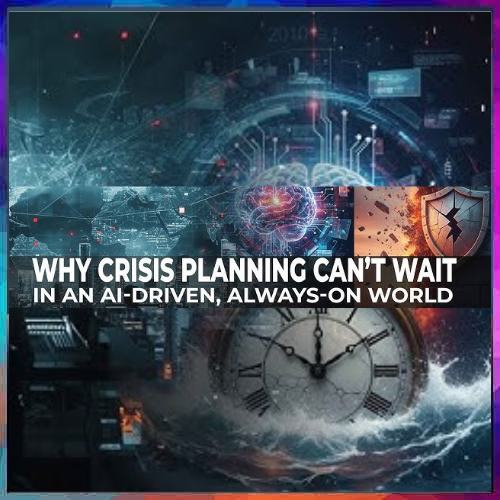
The present decade has experienced innovations which have changed the way industrial activities are carried out. This shift has opened gateways for a lot of experimentation as well as automation – the idea behind both is to figure out an easier and efficient way of doing things. The constant push for the latter has caused a disruption in the sales industry lately. In the context of sales and marketing, it is an established fact that both needs to be in sync for successful execution of any sales enablement strategy or growth plan. With marketing automation gradually making its presence prominent in the product/ services promotion domain, it has become imperative for sales functions to understand as well as adapt to its underlying dynamics, in order to ensure the sync.
Understanding the basic dynamics
To delve deep, it is important to re-learn the basics and the easier route is to begin with the literal verbiage, Marketing Automation – in factual terms, refers to online tools and processes which automate the marketing actions which would have otherwise been manual as well as time consuming tasks. It can also be termed as a crucial cog in the wheel of sales enablement as it is one of the driving forces which enables sales. Apart from other analytics based functionalities, it also comprises undertaking repetitive tasks, such as emailers, website actions etc. which are important but take away useful man-hours. In addition to that, the preface of marketing automation ensures the delivery of personalized content which in turn assures that prospects are nurtured well and thus, their conversion into customers becomes more probable. It will be wise to say that on a broader level, marketing automation bridges the gap between marketing and sales activities of the organization, thereby strengthening the strategy planning and implementation procedure.
Benefits beyond converting customers into loyalists
Digging further, the fact that marketing automation allows one to track and map all the activities of a prospect as well as an existing customer, such as, when are they visiting the subject website or opening an email, how much time are they spending on the content which the organization is sending across, their browsing habits etc., gives an edge to the organisation and helps them in putting a reaction-based, personalized and targeted strategy. Glancing through few of the innumerable benefits of marketing automation:
* Easier segmentation of prospects as well as current customers based on their online behavior
* Provision of nurturing leads well-in-time – automating targeted content at pre-specified time increases the visibility assurance as well as attention span from the customer
* Getting real-time as well as post-campaign analytics ensures that requisite changes/ additions can be done in the outreach strategy
Need or Hype
Looking at the benefits as well as the need-of-the-hour necessity, marketing automation is something which no progressive organization can do without. Though not easy, it is certainly possible for organizations to put together and automate a well-strategized marketing plan which suits the business nature – be it a start-up or an established organisation. The process can be compared to the tilling of a field and making it a fertile ground for nurturing the prospective leads and then yielding new customer base.
How it works
For any sales program to be successful, it is important for businesses to understand the exact value proposition which they can derive from the marketing automation tools. For any sales organization, eventual aim of marketing is revenue generation. Doing a targeted & contextual placement of business messaging drives potential eyeballs to the organization. Once the attention is grabbed, it is crucial to share with them personalized set of solution messaging and then convert them into leads which will finally get converted into customers, if fostered well. In this entire process, marketing automation is the basic premise which keeps the engine of information generation as well as the flow, in order.
How the sales cycle gets modified and up-scaled with the introduction of marketing automation is also an interesting scenario. The whole sales process starts with generating/identifying database of entities that need to be put through the sales cycle to convert into a prospective customer. Technology can be leveraged effectively to generate additional whitespace (never contacted or sold to entities) and increase the size of the pie to be focused on. This is followed by a prioritization of the contactable database (DB) by mapping them onto past sales trends linked to seasonality, conversion rate sector-wise or area wise using a smart DB access platform (SDAP). The database is then subjected to digital marketing initiatives like EDMs, emailers, webinars, blogs, targeted content placement over the online demography frequented by prospects etc. Basis the response, the prospects are then given a lead score, bucketed as per the propensity score achieved and a well-defined lead data sheet is created to help identify high conversion probability prospects. The leads are then nurtured and eventually converted into customers. Understandably, marketing automation is premeditated to help optimize and condense the length of the sales cycle by automating many of the marketing and sales tasks which otherwise reduce the efficiency of the workforce.
Ultimately, moving towards a better ‘selling’ world
It will be logical to comprehend the importance and inevitability which marketing automation holds in the realm of sales enablement. It can be leveraged effectively in preparing the sales team and equipping them to drive successful sales outcomes with improved conversion probability.
See What’s Next in Tech With the Fast Forward Newsletter
Tweets From @varindiamag
Nothing to see here - yet
When they Tweet, their Tweets will show up here.





























